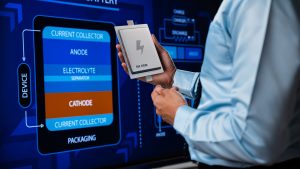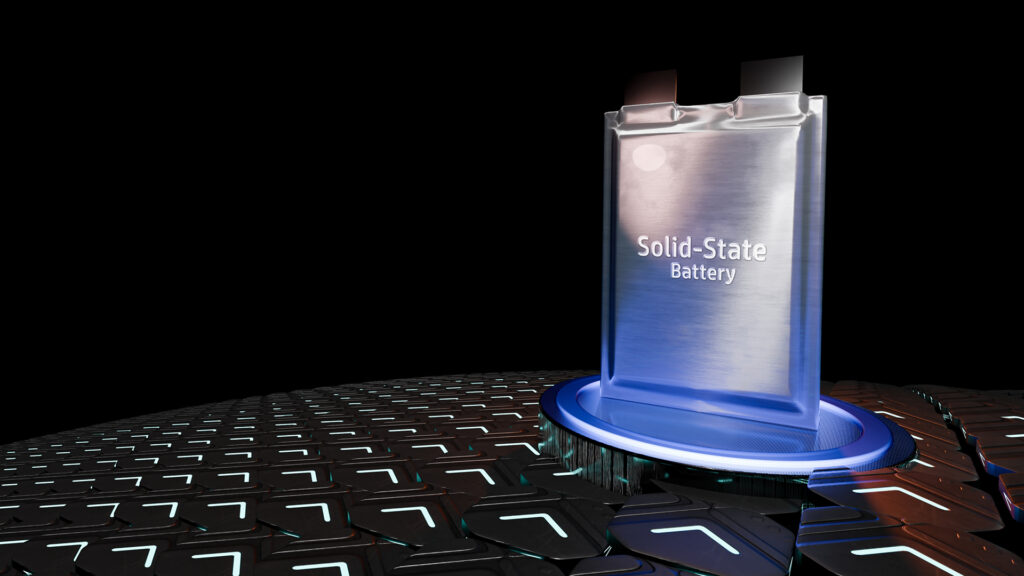The SOLiD project is developing next-generation lithium metal batteries that combine safety, performance and recyclability for Europe’s clean energy future.
Few technologies are as essential and under scrutiny as batteries on the path to a climate-neutral future. Batteries, which power everything from smartphones to electric vehicles (EVs), are at the heart of the energy transition. But as demand grows, so do concerns about sustainability, cost, and the physical limitations of today’s mainstream lithium-ion technology.
SOLiD is an ambitious EU-funded project that aims to redesign the rules of battery manufacturing. Founded in September 2022, SOLiD brings together 14 partners from nine countries, ranging from industrial powerhouses to agile SMEs and leading research institutions. The goal of this project is to create a sustainable pilot-scale process for the next generation of solid-state lithium metal batteries that promises higher energy density, improved safety, longer lifetimes, and recyclability by design.
Three years have passed since SOLiD was launched, and the project has reached a turning point. Breakthroughs in electrode coatings, electrolyte formulation, and digital quality control are paving the way for Europe to scale up solid-state batteries beyond the laboratory and into real-world production. And with it, the promise of lighter, longer-lasting batteries for EVs, more secure storage of renewable energy, and a path to European battery sovereignty.
Beyond lithium-ion: the need for a new generation
Lithium-ion batteries have driven the electrification revolution to this point. They power millions of EVs on European roads and are at the heart of the continent’s renewable energy storage plans. However, its limitations are becoming increasingly apparent. Liquid electrolytes are volatile and flammable, graphite anodes limit energy density, and dependence on key raw materials, particularly cobalt, poses both supply risks and ethical concerns.
Solid-state lithium metal batteries (SSBs) offer a way forward. By replacing liquid electrolyte with a solid electrolyte and replacing graphite with a lithium metal negative electrode, these batteries can store up to 70% more energy in the same volume. It also reduces the risk of fire, improves performance at high voltages, and creates the potential for lighter and more compact battery designs. Most importantly, by using advanced protective layers and thinner electrode coatings, dependence on cobalt and lithium can be significantly reduced.
The problem so far has been scalability. Most SSB research remains confined to the laboratory, where carefully manufactured cells work in small numbers but not under industrial conditions. SOLiD was launched with the goal of building scalable manufacturing, recyclable design, and digital quality control into the DNA of solid-state batteries.
Reinventing the battery factory
SOLiD is redefining battery manufacturing beyond better materials. Traditional electrode manufacturing is a wet, wasteful process that relies on toxic solvents and energy-intensive drying steps. SOLiD pioneers roll-to-roll (R2R) dry extrusion coatings that blend cathode active materials, polymer electrolytes, and conductive additives into a uniform film without the use of solvents or excess material waste.
Dry coating is a “game changer”. It’s cleaner, faster and better for the environment and production costs as it eliminates the need for expensive solvent recovery and drying infrastructure.
On the anode side, the project is scaling up pulsed laser deposition (PLD) to create ultrathin lithium layers just 5 micrometers thick. This precise coating is supported by an in-line process that designs a stable interface, ensuring compatibility between the cathode and electrolyte layers. This careful interfacial control is critical to prevent dendrites, small needle-like formations that can pierce the electrolyte and short the battery.
Meanwhile, solid polymer electrolytes (SSPEs) themselves are being reinvented. Early research focused on polyethylene glycol-based systems, but by mid-2025, the team had introduced PESDA, a polyester-based formulation that significantly outperformed its predecessor. PESDA has proven to be ideal as an electrolyte for scaling up to pouch cells, as it has up to 250% tensile yield before failure and stable cycling performance, retaining 95% of its capacity after 120 cycles in prototype cells.
From the lab bench to the pilot line
SOLiD’s approach is characterized by a focus on industrialization from the outset. Rather than experimenting with coin cells in isolation, the consortium has been building and validating reference cells in both 1 Ah and 10 Ah formats. These so-called “2B generation” cells built with liquid electrolytes serve as a benchmark to ensure that new solid-state designs match and exceed established industrial performance.
Pilot scale production is already underway. A cathode film with improved thickness control and uniformity has been demonstrated, while the consistency and reproducibility of slot-die coated separator electrolytes has been tested.

The first smart inspection tool that combines particle detection, optical monitoring and electrochemical impedance spectroscopy has been integrated into the pilot line. By late 2025, the first of these inspection systems is expected to be fully operational and enable near real-time quality assurance.
This is where SOLiD’s digital edge comes into play. The project is developing a “digital twin,” an AI-driven feedback and feedforward system that links inspection data directly to process controls. In fact, factories learn during production to reduce defects, improve yields, and reduce costs. This “digital twin” of battery production lines could serve as a template for future gigafactories that aim to minimize waste and maximize efficiency.
Build sustainability from day one
SOLiD’s planned recycle-by-design approach (i.e., the use of a polymeric interlayer that facilitates easy stripping and direct recycling) aims to support the development of more circular battery solutions. Current lithium-ion batteries are extremely difficult to recycle, requiring energy-intensive processes that recover only a fraction of the valuable material. Unlike traditional cells, SOLiD’s design explores ways to integrate recycle-friendly materials and interfaces from the start.
The polymer interlayer is designed to be easily peeled off, allowing the cathode, electrolyte, and anode to be separated at the end of life. Non-toxic housing material and modular design make disassembly easy. Advanced software tools track material composition and facilitate more efficient recycling.

These design principles are intended to support safer and longer-lasting batteries, but are also suitable for secondary uses such as stationary storage. In this way, SOLiD directly supports the integration of renewable energy into homes and the electricity grid, which is a cornerstone of Europe’s decarbonization plan.
milestones and momentum
By the third year of the project, the following impressive results have been achieved:
We succeeded in dry extrusion molding of the cathode with improved film uniformity. Pilot-scale coating of solid polymer electrolytes using slot-die technology. Validation of polyester-based electrolytes with excellent mechanical and electrochemical properties. Reference “Gen 2b” cell built and tested in multiple formats. In-line inspection and quality control tools integrated into the pilot line. Disseminate results to the global battery community through peer-reviewed publications and conference presentations.
These advances are not only technological, but also strategic. Global demand for batteries is expected to increase 14 times by 2030, with Europe facing intense competition from Asia and North America. SOLiD is helping to secure Europe’s position in the global battery competition by developing both the materials and manufacturing methods for next-generation SSBs.
European strategic battery sovereignty
Behind SOLiD’s technological advancements is a larger strategic goal: ensuring Europe’s energy independence. Currently, most of the most advanced batteries are produced in Asia, with China, South Korea and Japan dominating the supply chain. This imbalance exposes Europe to supply risks and undermines its ability to fully control the environmental and ethical footprint of its energy transition.
The EU is working to change this balance by investing in projects such as SOLiD. The technologies developed, including dry extrusion, pulsed laser deposition, and recyclable interlayers, are more than a laboratory success. These are the building blocks of a homegrown European battery industry that can be expanded sustainably and competitively. In practical terms, this means reducing dependence on imported batteries and critical raw materials, while at the same time creating skilled jobs in European factories and research centres.
Building this battery sovereignty is not an option, but a necessity if Europe wants to meet its Green Deal goals and remain competitive in the global clean technology race.
Looking forward: Scaling and impact
As SOLiD enters its final stages, attention is turning to extending innovation to pouch cells and refining digital quality control. The ambition is clear. The goal is to build a cost-effective, high-yield, and environmentally friendly pilot-scale production line that can be transferred to industrial partners.
If successful, the project’s impact will ripple throughout the value chain.
For EV drivers, ultra-high energy density batteries mean longer range and faster charging. For manufacturers, dry processing and PLD methods reduce costs while improving safety and reliability. Regarding the environment, recyclability by design and reduced dependence on cobalt and lithium reduce pressure on critical raw materials and ecosystems. For society, safer, longer-lasting batteries open up new applications in renewable energy integration and grid storage.
In many ways, SOLiD is building more than a battery, it’s building a blueprint for the factory of the future.
big picture
The story of SOLiD is also a story of Europe’s determination to lead in clean technology. Batteries have been identified as a strategic priority as the African continent moves towards the climate neutrality goals of the Green Deal. Projects like SOLiD not only advance science, but also ensure that capacity, sustainability, and resource efficiency are built into the very architecture of the industry.
With consortium leadership from Finland’s VTT Technology Research Center and strong participation from academia, SMEs and industry, SOLiD is the epitome of European collaboration. This reflects the continent’s recognition that the energy transition is not just a technological challenge, but a social and economic challenge.
final thoughts
The journey from laboratory prototype to industrial reality is not an easy one. But as the SOLiD project shows, it is possible to integrate cutting-edge materials science, innovative production methods, and sustainability principles into a coherent roadmap. The three-year-old project has already proven that solid-state batteries can be made cleaner, safer and more efficiently.
With SOLiD’s pouch cell prototype in production and its digital quality control system operational, Europe will move one step closer to a more powerful, sustainable and fully recyclable battery future. SOLiD is creating more than just energy storage. This is boosting Europe’s energy independence, promoting cleaner mobility and establishing the foundations of a circular economy. This is evidence of the fact that the future of electrification can be strong and sustainable.
This article will also be published in the quarterly magazine issue 24.
Source link

